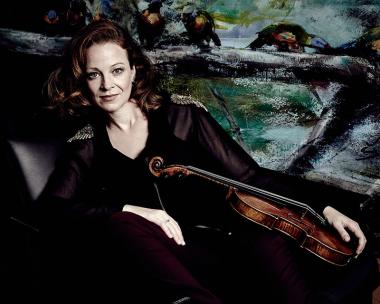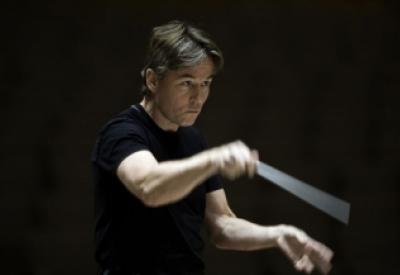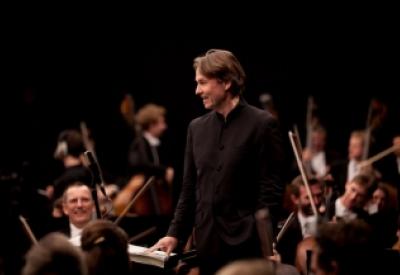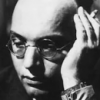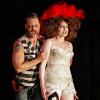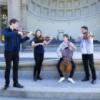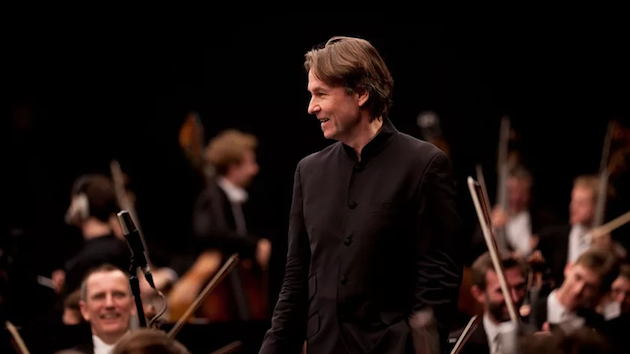
Leave it to the Los Angeles Philharmonic to take a deep dive into the appeal of the Weimar Republic, offering an array of concerts exploring the musical culture of Germany’s politically charged era, as well as augmenting the programs with a collection of commissioned installations, exhibitions, performances, cabarets, and even a closing day/night film marathon presented in collaboration with American Cinematheque (Feb. 29).
Indeed, from February 7 through February 16, audiences will not only be treated to striking programs led by Conductor Laureate Esa-Pekka Salonen that survey the period, but they will also have the opportunity to fully immerse themselves into everything Weimar, when German artists were making indelible contributions to the fields of literature, art, architecture, music, dance, drama, and film. (Here is a complete listing of events, including Nicole Miller’s world premiere light installation, Transition and Kurt Schwitter’s epic sound poem, Ursonate.)
In a press release, Salonen explained that he has always been interested in the era for its “aesthetic, its humor and open possibilities, its artistic freedom in blending art forms and genres. But I feel there are also lessons and an urgent relevance in looking at that time today,” adding, “progress is not inevitable, and perhaps we are living through something that is very similar to the Weimar Republic without knowing it.”
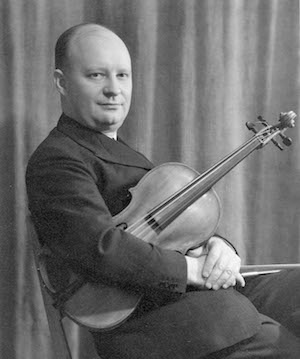
That kaleidoscopic landscape provided fertile ground for an investigation into the era’s fusion of historic influences and modern style. Salonen kicks off the series February 7–9 with a program featuring Paul Hindemith’s Ragtime (on a theme of J.S. Bach), which was originally a four-hand piano piece orchestrated in 1921 (not the better-known Ragtime from Suite 1922), Hindemith’s Symphony: Mathis Der Maler (Matthias the painter), Two Chorale Preludes by Bach arranged by Arnold Schoenberg, and Kurt Weill’s Violin Concerto, with soloist Carolin Widmann. Weill, who left Germany for Paris in 1933 before emigrating to America, where he died in 1950, wrote his only violin concerto in 1924.
Speaking by phone from her home in Leipzig, Germany, Widmann, who was born in Munich in 1976 and will be making her LA Phil debut under Salonen, noted that the work had been on her wish list for at least 10 years. She pointed out that because of its unique instrumentation — a concerto for violin and wind orchestra, with the addition of four double basses —nobody wanted to do it. “It’s tricky to put into a program,” added Widmann. “Weill is most known for his Threepenny Opera” and the concerto is one of his strongest works. He was only 24 when he wrote it and I feel also the spirit of the ’20s in Berlin and in Germany, just before the big disaster [the rise of Hitler and the Nazi Party].
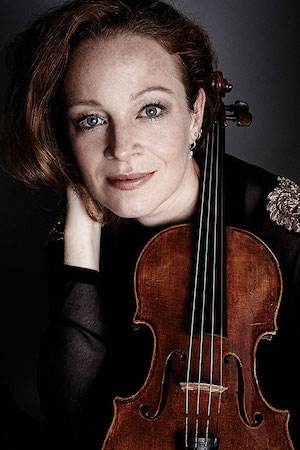
“The comparison to today is being made, but,” said Widmann, “I’m optimistic. I do believe we have learned and I think it’s too exaggerated to compare today to the Weimar Republic, because so many factors are different. But it was the most carefree era we had.”
The violinist noted that democracy was young then, “and our nation was so young and many new things were coming in. Weill is taking what he has learned in his lessons and he doesn’t break with any traditions. He’s not trying to be modernist, but he is trying to create something new with what he knows from history. The year 1924 was still quite a good time where Weill felt safe and was inspired by the hotbed of interdisciplinary art works that was such a wonderful breeding ground for the arts.”
While the Weimar Republic began as a bold German political experiment at the end of the First World War — enduring until the escalation of Nazism and marked by staggering intellectual productivity, Stanford professor of music, Stephen Hinton, who authored Weill’s Musical Theater: Stages of Reform, the first musicological study of Kurt Weill’s complete stage works, does see parallels to Weimar culture in today’s heated environment.
“There are a number of takes one could have on comparing the Weimar Republic to what we’re going through at the moment,” said Hinton in a phone call from Berlin where he was teaching. “The Weimar Republic has a positive side and a negative side to it, like all things. The negative side, as much as it was a fascinating experiment in democracy, it failed. If democracy failed then, it’s possible it could fail again. We are going through some dark times. But there is a lot of interest in the culture of the Weimar Republic and the music.
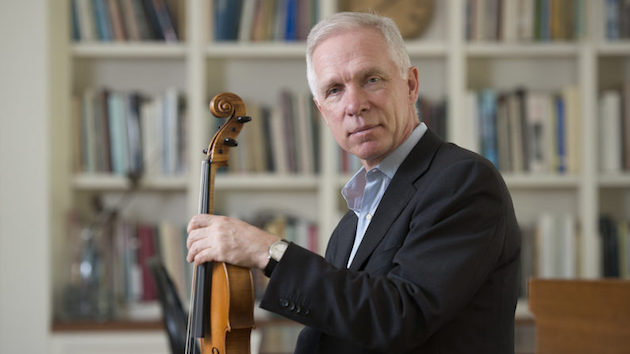
In addition, Hinton spoke to the importance of The Seven Deadly Sins, by Weill and Brecht and which will be performed February 13–16 on a program that also features the duo’s The Berlin Requiem and Hindemith/Kokoschka’s 1919 one-act opera, Murder, the Hope of Women.
“It’s amazing,” noted Hinton, “how well Kurt Weill has fared and even flourished in the last 50 years — how his stock has gone up as the stock of the high modernists has gone down. There was a kind of tug of war going on there. And while his violin concerto gets wheeled out occasionally, The Seven Deadly Sins does get performed a lot.
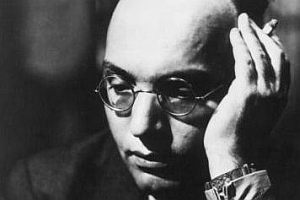
Hinton added that Sins is not only a repertory staple but also a terrific piece.” I’ve a lot to say about that piece because it was so fascinating as one of the first pieces — not the first piece — but the one he wrote after he left Germany and was living in Paris. It was written in German with Brecht and it’s about these sisters going from one American city to another. It’s curiously prescient about what was going to happen with Weill and Brecht going off to the States eventually.”
In a nutshell, the work is a sharp critique of capitalism, without the irony of earlier Brecht/Weill collaborations, with Hinton acknowledging that Sins is a great role for singers. “[Weill’s wife] Lotte Lenya, who did it originally and did it again during the Weill revival in the 1950s, had to take it down a few notches, because her voice dropped. A lot of people thought this was the original, but with all that vodka and cigarettes she loved to consume, the authentic version is quite a bit higher and has a tonal quality to it.”
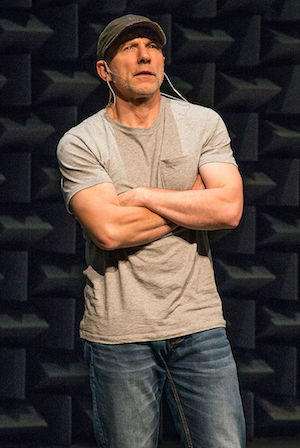
Actor/writer/director Simon McBurney, who cofounded the theater troupe Complicite in 1983, will be helming The Seven Deadly Sins, collaborating with his brother, Gerard McBurney, a composer/consultant/dramaturge. Having worked with Salonen in 2004 when he staged Berlioz’s Symphonie fantastique in Disney Hall’s first season, Simon McBurney was also seen on stage in his one-man show, The Encounter, which ran at the Wallis Annenberg Center for the Performing Arts in 2017 and received rave reviews.
But to say McBurney is “directing” the Weill/Brecht work, “is,” he insists, “a bit of a stretch,” adding that Salonen had asked him and his brother to come up with a program having to do with Weimar — “something that gives some sense of the scope in compositional and musical terms. Then he asked if I would make an evening that threads the three works together. We’re not in an opera house and we’re not in the theater, so you can’t really stage the Hindemith, but you can expose it and give people a sense of what it’s doing.
“And [regarding] the beautiful transitional piece, The Berlin Requiem, and the most theatrical piece, The Seven Deadly Sins, I suppose you could say that the intention is to give people an experience, rather than say this is going to be a fully formed piece of musical theater. The emphasis,” he continued, “is on hearing these pieces anew, rather than saying this is an operatic performance.”
Commissioned by a wealthy Englishman, Edward James, whose Paris dance troupe, Les Ballets 1933, counted the choreographer and dancer George Balanchine among its founders, Sins was composed as a “ballet chanté (a sung ballet), with the main character, Anna, “split” into singing and “dancing” halves. McBurney explained that “there are actors who move — eight performers, as well as the singers — so that there is a movement element, but because we’re not on a stage, there’s a limit.”
McBurney, who played Rupert Murdoch in Showtime’s 2019 miniseries, The Loudest Voice, is drawn to Sins on several levels. “Firstly, it’s an extraordinary piece of music and it’s very simply a journey. And it is a journey of this woman who leaves Louisiana to try and find her fortune and as she journeys, she begins to understand as she tries to find work in the land of developing or highly developed consumer capitalism, that she herself becomes the commodity.
“And it is, in a sense,” added McBurney, “a meditation on the commodification of the human. Or perhaps you could say the dehumanization or dehumanizing aspect of capitalism is told in the libretto by Brecht and scored by Weill,” also noting that, “there is an element that is fantastic and cabaret-esque. But there’s also, of course, an element in which the world seems to be pivoting for Brecht between the rising surge of Fascism and tyranny in Europe and then another kind of oppression or exploitation in the United States.
“If you like, the whole evening — and it is an evening — begins with Hindemith, who creates this piece [Murder, the Hope of Women] in the wake of World War I. He’s shell-shocked and takes Kokoschka’s script and writes music which is both kind of mythical and terrifying in a sense in which Berlin has fallen apart. Berlin, in a sense, is an annex of Europe.”
McBurney went on to say that while Brecht was in Paris writing, “he described a sense in which the new world is not necessarily offering a greater humanity than the old. That is part of the story and the story of Weimar is so extraordinary, because it’s this outburst of creativity. These pieces might describe a political journey for them — Weill’s and Hindemith’s journey. At same time, it was a period when Germany didn’t have democracy before World War I and in this new democracy, where everybody’s allowed to vote for whomever they like, there is an enormous spreading out of different opinions that allowed this great outpouring of music, dance, art and writing.”
McBurney also cautioned that it created a kind of political vacuum, because “no one person,” he explained, “is steering the ship. And into this vacuum, into the sense of profound disappointment in which working people felt betrayed, in which there was a sense of shame or loss of something because of the First World War — into this vacuum comes, “Let’s make Germany great again.” Of course, everybody falls for it. At the same time, you can see the arcs there, as well, because there’s such wit and beauty in this music as well as the craziness of the Hindemith.”
McBurney acknowledged that he wasn’t sure the performances would provide an answer as to how the works refer to the world today, but opined, “It’s an interesting question, and all I hope is that my task is not to make a new piece of theater — there’s neither the time nor money. But my task that Esa-Pekka asked me to complete is to bring this music alive in a way which is beyond simply the concert hall — or to invite people to listen in a new way.”
Professor Hinton would agree that these days folks are decidedly listening in a new way. He also pointed out additional parallels between life today and in the 1920s, including the emergence of new media, with “film and radio, and of course, the emergence of recordings. A lot of the music was being distributed on shellac or on the radio — and there was a famous cultural critic and philosopher, Walter Benjamin, who looked at art in the age of mechanical or technological reproduction — or its reproducibility.
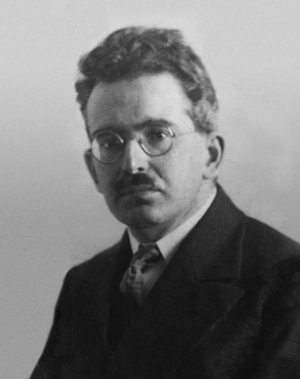
“He looks at the aesthetic of technological reproduction and how the art work had really changed its nature and above all, what was changing was our attitudes to the work because of new modes of reception. If you look back 100 years and draw parallels, we’re going through a technological revolution now because of the internet. They had their modes of distribution — the concert hall was trying to explore ways for artists to find new audiences and larger audiences.
“Nowadays, every self-respecting artist has to be aware, and not just artists — but if they don’t embrace the new media in some form and to some extent, they’re going to miss the boat. I feel that as a teacher; I started doing online classes to explore what’s possible, for better and for worse, but also to reach audiences all over the world. If you define society in terms of the cultural outlet that it offers to the artist, then the artist’s responsibility to society is to explore those artists to reach the people the artist wants to reach.
“This is a moving target and Benjamin was right,” Hinton said emphatically. “What the media were doing back then was creating a sense of distracted reception. If you think they had distracted reception back then, Benjamin should get into his time machine and [experience] this.”
And whatever medium one chooses to experience the 21st century, the Weimar Festival seems to have you covered.

